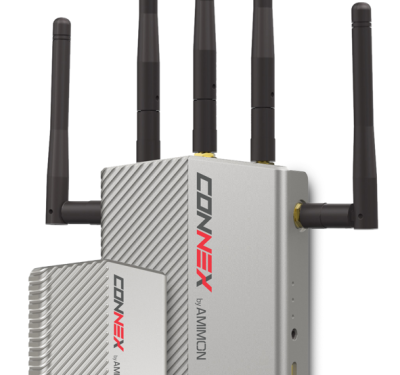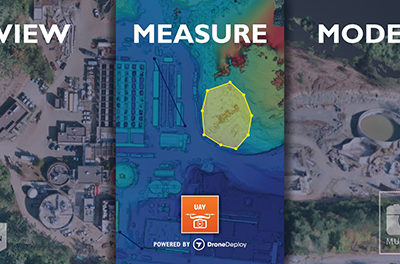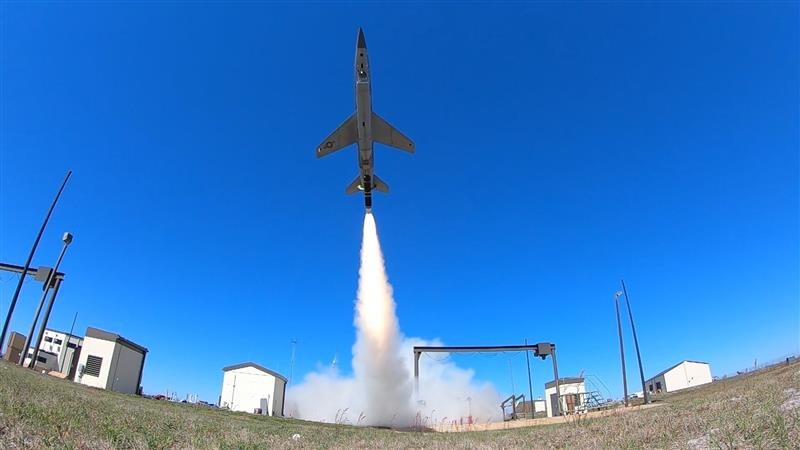 A 19-foot unmanned U.S. Air Force prototype fighter jet, the Kratos Unmanned Tactical Aerial Platform (UTAP-22) tested the skies over Florida and the Gulf of Mexico, April 29 to May 5, with manned fighters in attendance. Part of the Skyborg program, the UTAP-22 proved the brainpower of its autonomy core system (ACS) by receiving basic flight commands and deciding on its best flight path and throttle settings to comply with the commands.
A 19-foot unmanned U.S. Air Force prototype fighter jet, the Kratos Unmanned Tactical Aerial Platform (UTAP-22) tested the skies over Florida and the Gulf of Mexico, April 29 to May 5, with manned fighters in attendance. Part of the Skyborg program, the UTAP-22 proved the brainpower of its autonomy core system (ACS) by receiving basic flight commands and deciding on its best flight path and throttle settings to comply with the commands.
[Photo: The Skyborg autonomy core system launches aboard a UTAP-ww at Tyndall AFB, Florida on April 29. (U.S. Air Force photo)]
Aircraft controllers on the ground provided commands to the ACS during this test series. In the future, a manned F-16 Fighting Falcon in the air will send commands to the unmanned’s onboard ACS . These commands could task the ACS “brain” to find and track targets by flying the aircraft to the area of interest and reporting enemy contact locations to the manned fighter.
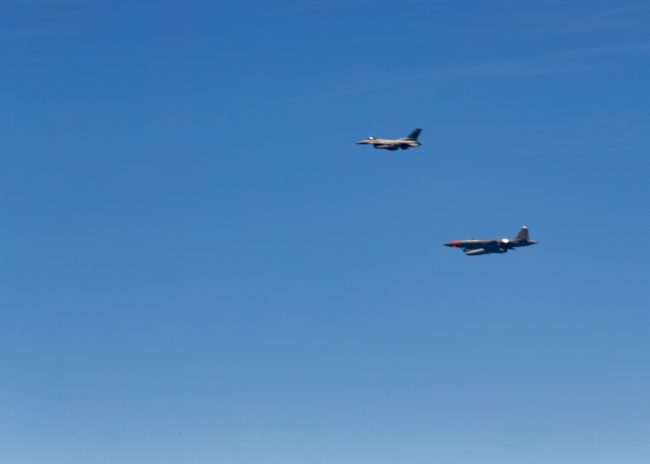
Maj. Nathan McCaskey, an F-16 Test Pilot with the 96th Test Wing , observes an autonomous UTAP-22 aircraft over the Gulf of Mexico, May 5, 2020. The pilotless aircraft was modified to operate under its own computerized control as part of the Air Force Research Laboratory’s Autonomous Attritable Aircraft Experiment. This flight was the closest a manned fighter has flown to an unmanned aircraft under autonomous control in the history of the Department of Defense. (U.S. Air Force photo by Master Sgt. Tristan McIntire)
The ACS demonstrated proficiency in basic aviation abilities and responded to commands while navigating in a shared airspace with up to four manned fighter aircraft, including both F-16s and F-15Es from the 40th FLTS.
By performing a series of foundational behaviors necessary to characterize safe system operation, it reached Milestone 1 of the Autonomous Attritable Aircraft Experimentation (AAAx) campaign, The ACS demonstrated basic aviation capabilities and responded to navigational commands, while reacting to geo-fences, adhering to aircraft flight envelopes, and demonstrating coordinated maneuvering. It was monitored from both airborne and ground command and control stations.
Milestone 1 was the first time an active autonomy capability was demonstrated on an Air Force test range, and is a first step to integrating these aircraft into a complex operational environment. This begins a sequence of experimentation events planned over the next several months. Follow-on events will demonstrate direct manned-unmanned teaming between manned aircraft and multiple ACS-controlled unmanned aircraft.
The aim of the Skyborg Vanguard program is to integrate full-mission autonomy with low-cost, attritable unmanned air vehicle technology to enable manned-unmanned teaming. Skyborg will provide the foundation on which the Air Force can build an airborne autonomous system of systems that adapts, orients, and decides at machine speed for a wide variety of increasingly complex mission sets.
The UTAP-22 has an operational ceiling of 50,000 feet and a top speed exceeding .9 Mach. It allows flexibility in command and control architecture, ample payload capacity, and flexible vehicle signatures in a low-cost system, relative the manned fighter craft.. Utilizing a minimal footprint rocket-assisted launch and precision parachute recovery, the UTAP-22 can operate in austere locations without a runway.
The UTAP-22 supports various mission requirements by accepting a wide array of internal and external payloads. The large, configurable auxiliary bays provide up to 8.5 cubic feet of payload volume. Additional payloads may be incorporated.
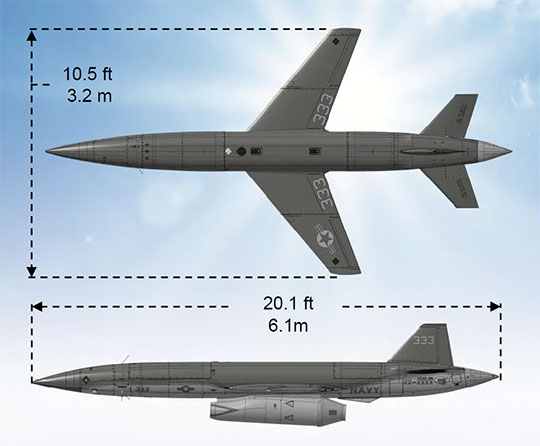
UTAP-22 Mako Dimensions
“We’re extremely excited for the successful flight of an early version of the ’brain‘ of the Skyborg system. It is the first step in a marathon of progressive growth for Skyborg technology,” said Brig. Gen. Dale White, Program Executive Officer (PEO) for Fighters and Advanced Aircraft and Skyborg PEO. “These initial flights kickoff the experimentation campaign that will continue to mature the ACS and build trust in the system.”
“Through this operational experimentation campaign, AFRL is leaning forward to get early engagement with the warfighter to deliver a suite of full-mission autonomy on a relevant timeline,” said Brig. Gen. Heather Pringle, Commander of the Air Force Research Laboratory (AFRL) and Skyborg Technology Executive Officer (TEO). “AFRL is proud to be developing this force multiplier for the U.S. Air Force with our partners at PEO Fighters and Advanced Aircraft and the 96th Test Wing.”
The U.S. Air Force 96th Test Wing is based at Eglin Air Force Base, Florida.
“This test is a significant step toward teaming manned and unmanned aircraft in combat in the not-too-distant future,” said Maj. Nathan McCaskey, 40th Flight Test Squadron Test Pilot and AAAx Project Pilot. “Unmanned aircraft using the autonomy system developed for this experiment could go places where manned fighters can’t go, providing sensor information back to manned teammates, increasing the power projection capability of the Air Force.” McCaskey, the lead pilot for the AAAx missions, flew the closest ever manned fighter to an unmanned aircraft under autonomous control in DOD history.


